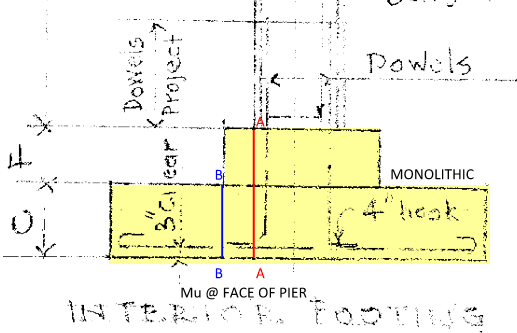RPMG
Structural
- Nov 7, 2014
- 333
I have a project assessing an existing structure from the 40's where the square spread footings are under-reinforced (<0.0020*Ag). If I apply the old "one-third greater area of steel" rule, then the entire building is in distress. The footings have a monolithic pad on top, and I'm curious as to the design methodology of the footings in the 1940's. It appears the designer intended much greater capacities, and there have been no problems.


